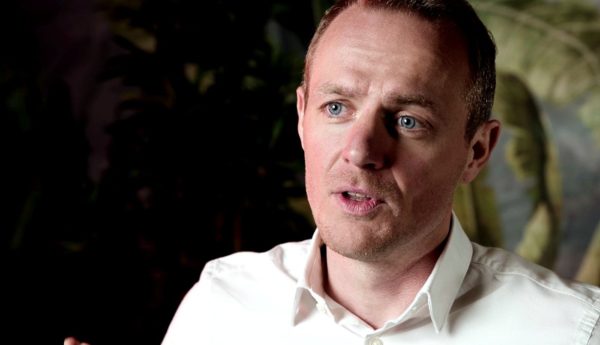How technology and marketing are increasingly overlapping: “Everything has to be an experience for the customer”

A website today is not just a website. It is a true experience for the customer and a goldmine of information for the marketing department. The same goes for an app, customer service contact moment or a customer portal. All these digital touchpoints connect nicely, and the transition from one to the other is flawless for the user or visitor. Behind that beauty are a well-thought-out customer journey, a clever strategy and several designers. Or at least if you leave your digital transformation in the hands of the international company Upthrust, which is part of the Customer Collective group.
The Digital Product Studio of the business accelerator Upthrust focuses on designing and building digital touchpoints such as websites, apps or portals. The specialized team doesn’t just do this at random, but in a well-thought-out way so that companies are ready for the future. “We make sure that all the touchpoints we build and implement for them fit and are integrated into the company’s ecosystem,” says Emanuel Nuyts, head of Digital Product Studio at Upthrust and Group Managing Partner at the umbrella group Customer Collective.

So Emanuel’s team looks beyond just the digital tools. “We listen to our client’s goals, desires and future plans. We look at their target audience – are they B2C or B2B, or even more specifically, targeting one or more personas or customer segments? These are things that have nothing to do with digital touchpoints and are purely strategic, but it forces the customer and us to take a step back and look: what do we really need here? Because just flying in somewhere and starting to build will get you nowhere,” it sounds clear. “We create touchpoints that can last for years and grow with the company and its ambitions.”
We create touchpoints that can last for years and grow with the company and its ambitions.
Finding the balance
With the right touchpoints, companies can offer their consumers or users a beautiful digital experience, which is obviously a significant investment for many organizations. “This investment should preferably yield something, of course,” says Nuyts. “That’s why with every project we look for the balance between the experience for the end customer on the one hand and nice business results on the other.”
Finding the balance is not always easy, but the clients – names à la Deskalot (venture of Partena Professional), Barco and Torfs – who knock on Upthrust’s door are ambitious. “Our clients don’t want a status quo. They want growth. They are SMEs or large corporates with a lot of ambition, which is also necessary. Because a digital transformation like this requires a lot of effort from the organization itself, after all, there are several steps that have to be gone through that are quite intensive. So you really have to want to do this because the results will obviously not come automatically.”
You really have to want to do this because the results do not come automatically.
A team of architects
With what questions or wishes do these clients mainly come to Upthrust? “That varies enormously,” says Emanuel Nuyts. “From ‘I feel like people are not finding their way on our website’ to ‘I need a completely new marketing approach’. The first are the smaller projects, where we analyse, improve or revamp the current website and ensure the conversion rate goes up. In the second case, we set a path where the website, apps, contact points and so on are completely addressed. This allows the marketing department to attract new customers or retain regular customers from different points.”

In this, Upthrust’s Digital Product Studio team takes on the role of architects. Because whether it’s a small or large project, the team invents, designs, builds and implements everything related to those digital touchpoints and the strategy around them. “There are many companies that either make websites or bet on growth hacking – but very few take both together. They are also two completely different approaches and different ways of thinking. But we do it anyway because the two worlds are coming together more and more.”
Nuyts further explains: “In growth hacking, there is a lot of experimentation. You learn a lot about what potential customers are looking for, what makes them convert, and so on. That is interesting input for optimizing the website. Then, once the website is up and running, you come back to growth hacking to gather the necessary information, build marketing plans and work on them. It’s a continuous interaction.“
Everything is an experience
Hence, it’s becoming less and less interesting to have every element of your digital transformation done by another company. “In the past, that might have been possible, but the corona crisis has given that digital world a huge boost. Companies need to give their customers a true experience when they come into contact with the organization. Whether that’s through the website, app or phone: it has to be right.”
Companies need to give their customers a true experience when they come into contact with the organization. Whether that is via the website, app or phone: it must be right.
A website is not just a website anymore; an app, not just an app. “Everything has become an experience,” Nuyts echoes. “If you want to do good marketing, you have to ensure everything fits together: website, app, sales, customer service. Your customer should not be hindered in any way. On the contrary, you must make it as easy as possible by providing a personalized experience. So that whole ecosystem must be fine-tuned to create the ideal customer journey.”
One designer is not the other
Clearly, those digital touchpoints must be technically strong. Otherwise, it won’t provide a smooth experience for the end customer. But that’s not the only thing you need to consider as a company today because the design of all your touchpoints matters too. “In the past, you had one designer who designed the website and done. Today you have four types of designers who each have their own speciality. First, you have concept designers who draw out a customer journey. Which channels does the customer pass through, what for and at what time? Then you have the UX designers. They are concerned with the user experience within that customer journey. Which content blocks should go where, what does the flow of the site look like? So they think about the structure and navigation of a touchpoint.”
In the past, you had one designer who designed the website and you were done. Today you have four types of designers who each have their own speciality.
And then you also have someone for UI (user interface) and branding. According to Nuyts, these specialists take care of the “emotional aspect of the touchpoints”: “The experience, the feeling that the site or app has to generate.” The CRO designer is the final expert in design that Nuyts sees as an essential skill. “The acronym stands for Conversion Rate Optimization. Or, in other words, someone who knows well what the tactics are to get customers to convert. What colours do you use? Where do you put reviews? The labels of payment methods? Placing those things correctly is important. It can increase the feeling of trust in your site or app – or not.”
Upthrust, part of the Customer Collective group, started up in 2018 but is already seeing that its combination of technology and marketing is catching on. “More and more companies recognize that to establish strong digital touchpoints, several disciplines overlap: design, strategy, conversion tactics and technology. So they are also looking for a partner that understands and can handle those four levels. We are the answer,” concludes Emanuel Nuyts.

